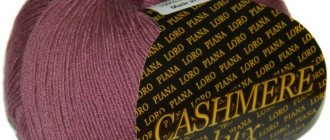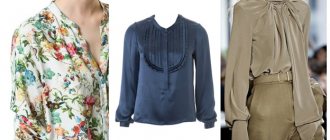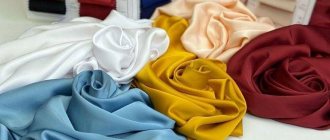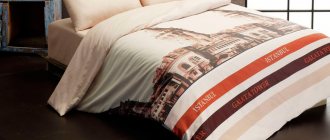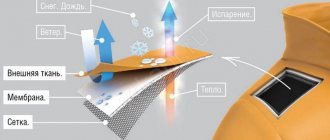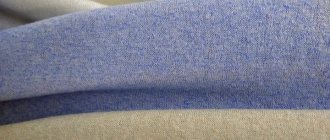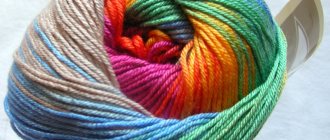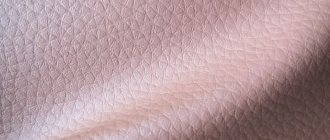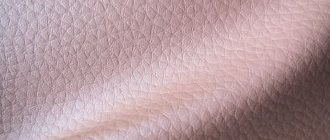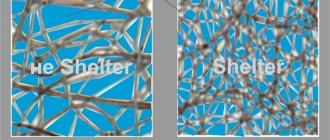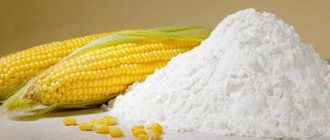The ability to work with complex and simple fabrics reveals the skill of a seamstress. One of these materials is guipure. However, the myth of his capriciousness is exaggerated. It is possible to cope with it. It is enough to know some secrets.
Unlike silk or satin, it does not crawl under your hands, and is not as thick as wool or denim. Here lace flowers, leaves, patterns seem to be woven into a mesh. And this mesh should look neat when sewing both outside and inside. Let's learn how to work with this fabric.
How to process guipure?
On almost all fabrics, seam allowances are processed using an overlocker. And those who have not yet purchased this technique process the cuts with a zigzag. Some materials are sewn with a backstitch, in which the edges are not visible at all.
Simply wrapping the allowances of guipure will not work due to the nature of the material. You can do it differently.
- Double or closed seam. In this case, the allowances will not be noticeable. From the inside out, the product looks neat. But with such tight seams, a dress or blouse can seem rough.
- Using color-matched bias tape or ribbon. The sections are wrapped with ribbon or bias tape in the color of the material and stitched. The fabric does not fray and looks neat. Bias trim made of chiffon or organza will be almost hidden from the front side.
- Zigzag or overlock can sometimes also be used to process seam allowances. This is true if the lace elements are located on a high-density mesh. After the final fitting, reduce the allowances by 3-5 mm relative to the seams and process them.
Sometimes you can sew two parts by overlapping each other. Guipure is cut out in scallops along the lace fragments and also stitched along them in a zigzag pattern. To prevent the fabric from stretching, you can put thin paper (tracing paper, tissue paper) on the inside, and remove it when finished.
How to work with guipure
There is an opinion that sewing from guipure with your own hands is difficult. In fact, this is not so - it is enough to know the basic nuances of working with this material. Modern craftswomen have the opportunity to use tools and devices that previously could only be dreamed of. They greatly simplify the work.
Fabric preparation
Before you start sewing, it is recommended to wash the guipure fabric. It is better to do this manually, in slightly warm water (30 degrees) or on a delicate cycle in the washing machine. No automatic spin!
Dry by carefully laying it on a horizontal surface. There should be no hot objects or heating radiators nearby. Iron in the “silk” mode through a damp cloth (gauze).
The main nuances of working with guipure
So, the fabric is washed, dried and ironed. You can start sewing. But first, read the following recommendations that will help you avoid mistakes and prevent damage to the product.
Useful tips
- Make as few seams as possible so that the finished product looks as aesthetically pleasing and attractive as possible.
- Make sure that the front and back of the pattern is symmetrical; carefully match it on all parts of the product.
- Cut out the pattern pieces along the lines of the pattern rather than in a straight line - the seam will be much neater and less noticeable.
- First make the lining, only then start cutting out the main product.
- To ensure patterns match well, use complete patterns.
How to glue guipure?
Guipure, like any other textile material, can be glued. It all depends on whether you need to do it for a while or so that it lasts for a long time.
- For temporary gluing, you can use weak-hold glue, a regular glue stick, or water-soluble interlining.
- For a longer time, use cobwebs and textile glue. However, it should be noted that these methods are only suitable for guipure, which does not stretch. Stretch guipure, firstly, will lose its elasticity, and secondly, it may tear at the place of gluing.
Selection of material and product model
The process of making a dress begins with the choice of fabric. The range of colors of guipure is amazing. It is used as the main fabric.
Dresses made of guipure are sewn with a lining, which is chosen so that the lace pattern is clearly visible. It should be darker, lighter or a contrasting color. Use satin, satin or silk.
The model is chosen to have a simple design so that darts and seams do not disturb the design. If guipure is not elastic, fitted silhouettes will not work.
How to sew guipure with a covering?
Most guipure products are sewn on a lining or cover.
Tip: choose a model with a minimum of seams, and move the darts to an inconspicuous place. If the cut is not complex, the same parts are cut from the lining fabric as from the main one. A dress sewn, for example, is folded right side to the wrong side of a lining cover, sewn along the neckline and the bottom of the sleeves. Next, it is turned inside out and, if necessary, sewn to the edge. If the cut is complex, then patterns made from lining fabric are simpler than those made from guipure. There is another, more labor-intensive way.
- Connect the guipure and lining parts.
- Sew the product.
- Finish the neckline: with a facing, bias binding made of satin, lace or organza, or fold and stitch.
- Process the bottom of the sleeves and hem.
What is guipure: description of the fabric
Guipure is a solid fabric with an openwork pattern on a mesh base. It is often confused with lace. But lace is more of a decorative element. It does not have a base, is more rigid, does not stretch, is often made by hand and, accordingly, costs more, and is used to decorate the main product.
Types of guipure
Previously, only silk fiber was used to make guipure. Now other threads are being used: natural (linen, cotton), as well as artificial and synthetic (viscose, polyester, elastane). This results in a fabric of varying densities, while being more durable and elastic. And if you add metallized thread during production, the pattern will become more expressive and beautiful.
The main types of guipure and their features are indicated in the table:
| Type of guipure | Peculiarities |
| Classical | Ordinary openwork fabric without any additives. |
| Knitted | Soft and elastic, with the addition of elastane thread, which makes the fabric more elastic. |
| Printed | With a relief pattern. Quite a tough material that holds its shape well. |
| Metallic guipure | Increased weaving density, due to which it is less transparent and has a metallic sheen. |
| Guipure leather | Increased density and strength. |
| Stretch | Stretches well. Great for sewing tight-fitting clothes. |
Properties of guipure
The properties of guipure directly depend on its type, the ratio of smooth and lace components. But there are a number of common properties that are characteristic of all types of this fabric.
So, guipure has the following properties:
- lightness and transparency. These parameters depend on the type of fabric, as well as the density and amount of lace. This also determines the rigidity of the material;
- does not dye well due to the use of different types of threads;
- easily torn;
- afraid of high temperatures;
- practically does not wrinkle and drapes well;
- does not shrink during washing;
- wear-resistant: with careful use and proper care, guipure products will last a long time.
Areas of use
What can you sew from guipure? Whatever! This beautiful lace fabric has found application in a variety of areas.
Main Applications:
- Dressy and casual clothes: dresses, blouses, skirts, cardigans, sweaters, tops, shirts, robes, underwear and much more.
- Accessories: gloves, scarves, summer umbrellas, etc.
- Home textiles: curtains, tablecloths, bedspreads, pillowcases, canopies, lampshades, etc.
How to sew guipure on a machine?
You can sew parts together in different ways.
- Straight stitch, selecting the optimal stitch length and presser foot pressure.
- Zigzag - especially stretch fabrics.
- The method of superimposing one element on another.
- Double seam with closed cut.
For sewing non-stretch fabric, needles No. 75-95 are suitable, depending on the density of the material. And stretch guipure should be sewn with special needles for stretch or superstretch No. 70-80. Guipure is a delicate fabric. However, it is quite possible to master the intricacies of working with it.
Patterns of guipure dresses
To make a pattern, you can use ready-made samples from fashion magazines or the Internet, adjusting them to your size. Or you can measure your parameters and take them as a basis.
First you should cut out the lining, then the main product. For the neckline and armhole, leave an allowance of 5 mm, for straight cuts - 1 cm. Lay out all the details of the pattern on the fabric and only then start cutting.
Guipure is not only elegant clothing. As you can see, it has many applications. All you have to do is decide in which form you like it best: as a stylish wardrobe item, an elegant accessory or airy home textiles. In the catalog of our online store there is guipure for every taste and for any purpose.
Varieties
Guipure can be used to cut out various details of a dress. This fabric is used for small inserts or individual elements of the outfit are completely cut out of it.
Lace top
Outfits with a bodice made of guipure and skirts made of a different material look gentle and feminine. Of course, to make the outfit look decent, the bodice is made of two layers: the top layer is cut out of openwork guipure, and the bottom layer is made of thick fabric.
What you need for work
Working with lace is much easier than it seems. However, the process is painstaking and requires perseverance and attention. You will need a special set of tools:
- sharp pins;
- needles;
- scissors.
The pins need to be extremely sharp and will not snag or pull the fabric. The easiest way is to choose glass pins. They will not tear the material, pull out the threads and visually spoil the appearance of the work.
Production Features
Various guipure manufacturing technologies make it possible to obtain materials with unique external features that combine strength, durability and the ability to fit perfectly on the figure.
- Programmable spinning machines produce any type of fabric based on the selected program. The work uses natural and synthetic fibers, as well as mixtures of them in a certain proportion to give the fabric softness and wear resistance.
- Expensive hand-made fabrics are made using the pulling or etching method. Both methods are based on removing “extra” fibers after applying the selected pattern to the base using hand or machine embroidery technology. The result is a thin openwork fabric that does not fray and retains its appearance for several years.
Where is it profitable to order guipure in wholesale quantities?
The online store invites future brides and specialists involved in sewing premium-class dresses to shop. The catalog presents modest and exclusive samples of fabrics from leading manufacturers, as well as branded fittings and decorative elements from which you can easily create a truly royal outfit. Wholesale customers can expect special cooperation schemes that guarantee tangible benefits and the possibility of regular supplies of materials in any required quantity. Additional consultations are available by phone.
History of fabric
The name of the fabric comes from the French language, the word can be translated as “air openwork”. The fabric is a type of lace with a convex through pattern.
Guipure was first produced in the 16th century and its homeland is Venice. At first, this material was produced in the form of braid, used to decorate outfits; later, the fabric began to be produced in the form of a single piece.
Nowadays, the production of guipure is automated; machines make patterns according to the program entered into them. To make guipure, natural (cotton, silk) or synthetic threads are used. There are several options for guipure on sale:
- Classic . Delicate and beautiful fabric, used for sewing and decorating clothes.
- Metallic . Made with the addition of shiny threads, the fabric has a characteristic shine.
- Net . The thinnest type of guipure, the material is almost transparent.
- Elastic . The fabric is made with the addition of elastic threads, so it has excellent stretch; this option is great for making inserts on dresses or blouses.
Work progress
Guipure material is difficult to process, so the process requires a certain skill and knowledge. The seam allowance sections are overlocked with an overlocker, processed with bias tape or cut along the contour and overlapped, and then secured with a zigzag stitch or manually. You can also use a reverse stitch: the seams are sewn along the front side, and then along the back. In dresses with sleeves, the armhole is also processed using this method.
All darts and seams must be basted on the main and lining fabrics. A sheet of paper is placed between the product and the material feed mechanism to protect the thin fabric from tearing. The width of the seam when sewing is 0.5 cm . To sew a fashionable dress with your own hands, you need to use thin sewing needles No. 75 and silk threads, and for stretchable guipure, knitwear needles .
The neckline and bottom of the product are finished with a figured edge or silk lace ribbon. Elastic guipure requires different handling - check your material for stretchability; if it stretches well, then it is better to use cotton tape to strengthen it.
The zipper is inserted into the middle or side seam, depending on the chosen style of the product. The edges of the zipper are edged with a seam allowance or bias tape.
Lining
You can use three different methods to create a lining for a guipure dress.
- It is made as an independent dress, removable - not attached to the main fabric, used with other dresses.
- The lining and base are sewn as a single unit. A basting is placed in the center of the back and front. Side and shoulder seams are sewn. The bottom of the product is folded together with the lining. The bottom of the lining can be shorter than the main product, then it is processed before sewing the side seam.
- Along the neckline the lining is attached to the base. The side and shoulder seams are pre-stitched. The right side of the lining is placed on the right side of the main fabric and hemmed. The cut is cut at regular intervals, not reaching the machine stitching 0.1 cm. The seam allowances are folded over the lining and stitched.
You can also make a beautiful two-color lining, then the model takes on the appearance of a skirt and blouse.
It is very important to iron the lace at a low temperature using an ironing iron (a piece of white cotton fabric) to avoid damaging the lace.
A few fashionable ideas for choosing the right guipure
Using guipure, you can add special charm and uniqueness to a modest outfit. Designers of leading fashion houses recommend using this season:
- fabrics with distinctly large patterns, ready to play solo or become a light cover on a silk or satin base;
- embossed lace, which boldly claims everyone’s attention and the role of a dominant detail;
- delicate guipure with a soft texture, which is best used for sewing a train, cape or light overskirt;
- vintage-style material decorated with antique embroidery;
- fabrics with floral patterns that can tastefully decorate the outfits of spring and summer brides.
